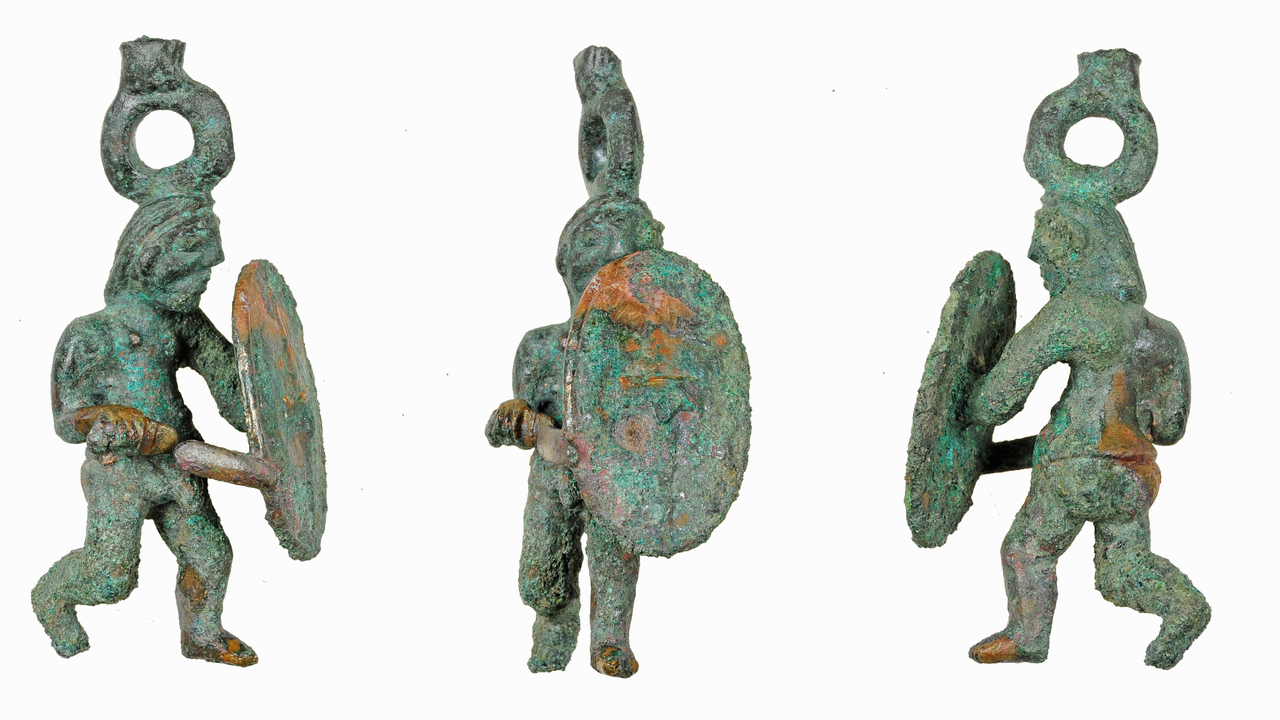Now Reading: 2,200-Year-Old Celtic Charm Reveals Advanced Iron Age Metalwork
-
01
2,200-Year-Old Celtic Charm Reveals Advanced Iron Age Metalwork
2,200-Year-Old Celtic Charm Reveals Advanced Iron Age Metalwork

Speedy Summary
- Revelation: Archaeologists unearthed a bronze figurine depicting a Celtic warrior at Manching, Bavaria, dating back to the iron Age (third century B.C.).
- Details: The solid-bronze charm stands 3 inches tall and weighs 1.9 ounces. It features intricate craftsmanship using the lost wax casting process and has a ring for hanging on chains.
- Meaning: The figurine portrays a dynamic warrior pose with recognizable Celtic equipment (shield and short sword), confirming descriptions of their fighting gear from ancient accounts.
- Context: Excavations at Manching have recovered over 40,000 artifacts so far. This large settlement north of the Alps was established in the fourth century B.C. but abandoned by the first century B.C. Less than 15% of its area has been archaeologically studied.
!The warrior statuette after restoration
(Image credit: Bayerisches Landesamt für Denkmalpflege)
Indian Opinion Analysis
The discovery at Manching illustrates how systematic excavation can provide critical insights into ancient cultures like those of the Celts, whose influences span across Europe yet remain understudied in detail compared to civilizations like Rome or Greece. Such findings deepen global understanding of Iron Age craftsmanship-highlighting advanced metalworking techniques like lost wax casting-and offer material evidence aligning with descriptive accounts of warriors’ military equipment.
For India, where archaeological efforts continue to reveal treasures from its own ancient heritage (e.g., Indus Valley Civilization sites or Gupta-period artifacts), this serves as inspiration for expanding research methodologies and rediscovering cultural narratives through scientific rigor. Cross-cultural studies between contemporaneous societies could enrich historical perspectives globally while emphasizing shared human technological evolution during antiquity.
This discovery underlines that even small-scale items can carry critically important historic value if appropriately investigated-a useful learning for Indian conservation practices amid rapid urbanization pressures impacting unexplored archaeological zones within the country’s borders.



























